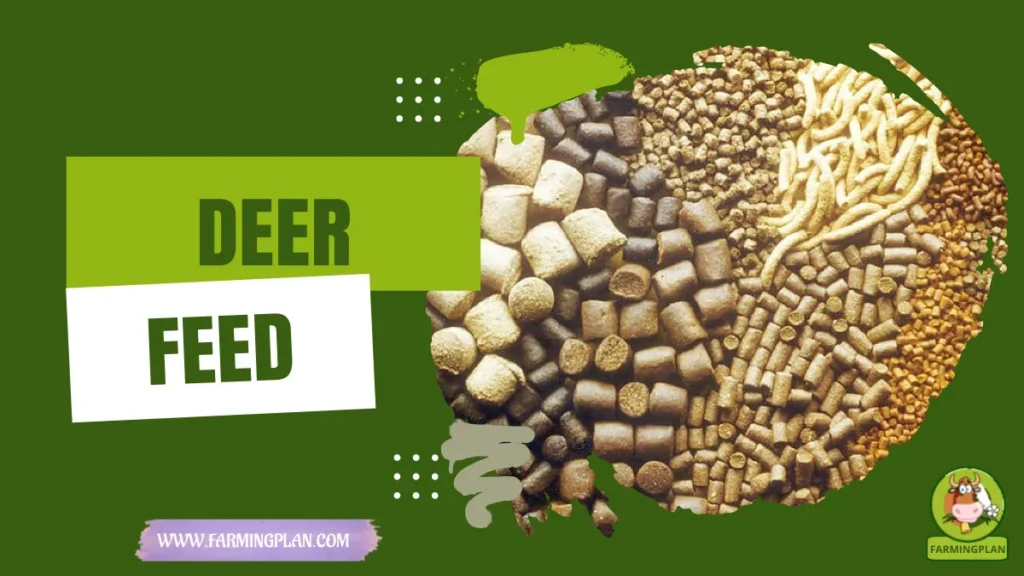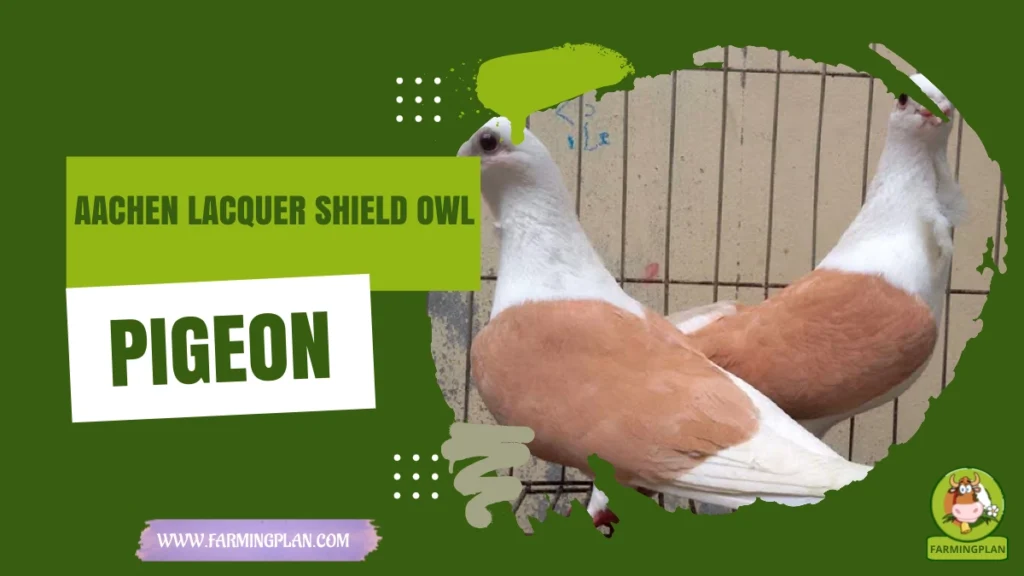Let me tell you, there’s nothing quite like seeing a Paint Horse in motion—their striking coats shimmer in the sun, and their personalities shine just as bright. As someone who’s worked with plenty of breeds over the years, I can honestly say a Paint Horse is more than just a pretty face. These horses are intelligent, hardy, and full of heart. Whether you’re looking to ride the trails, compete in Western events, or just want a loyal companion, the Paint Horse checks all the boxes. In this guide, I will walk you through everything I’ve learned about this colorful and captivating breed—from the field to your screen.

History & Origin of the Paint Horse
The story of the Paint Horse starts long before fancy ranches and show arenas. Its roots trace back to Spanish explorers who brought flashy, spotted horses to the Americas in the 1500s. These horses mixed with native stock and eventually found their way into the hands of Native American tribes. The Native American-painted horses were more than transport—they were symbols of power and spirit.
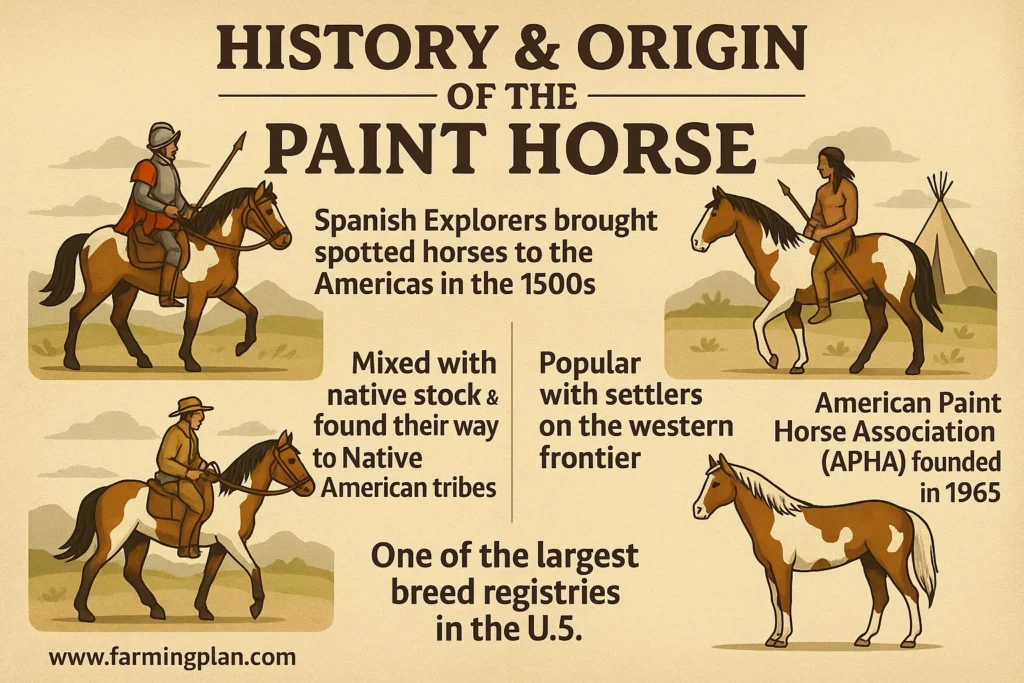
Over time, these uniquely patterned horses became a favorite among early settlers on the western frontier. They weren’t just beautiful; they were rugged and dependable. Fast forward to 1965, and the American Paint Horse Association (APHA) was founded to preserve this fantastic breed. Today, the Paint Horse stands proud as one of the largest and fastest-growing breed registries in the U.S.—a perfect blend of color, heritage, and performance.
Characteristics of the Paint Horse
If you’re new to Paint Horses, you’ll first notice their colorful coat patterns. These aren’t just random spots—they follow specific patterns like tobiano, overo, and tovero, each with its flair. The tobiano pattern tends to have white that crosses the spine with smooth edges, while overo paints show jagged white patches that usually don’t cross the back. Then there’s the tovero—a mix of both that often sports blue eyes and bold facial markings.
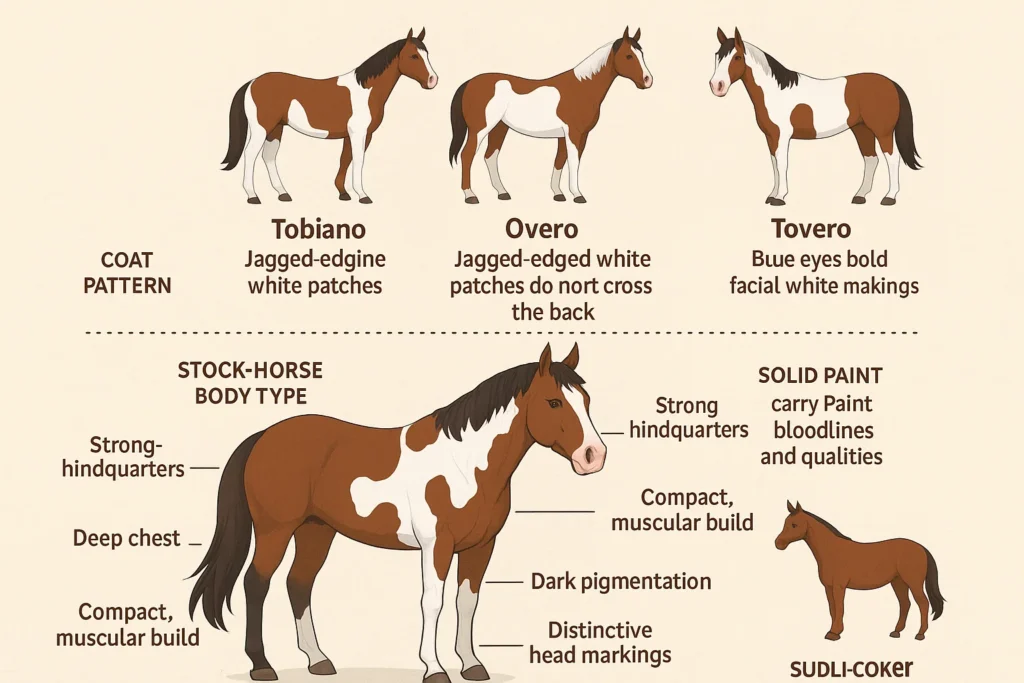
Beyond their coats, Paint Horses are sturdy. They’ve got a classic stock-horse body type—strong hindquarters, deep chest, and a compact, muscular build. Don’t be fooled by their flashy looks; they’re built for hard work. Some are even solid-colored (called “solid Paints”) but still carry the same Paint bloodlines and qualities. Add their dark pigmentation, distinctive head markings, and black-pigmented skin, and you’ve got one unforgettable horse.
Temperament and Personality of a Paint Horse
I’ve worked with all kinds of horses, but few match the easy-going attitude of a Paint. They’re known for being friendly, calm, and willing—a perfect fit for first-time horse owners or families. Whether you’re riding through quiet woods or leading them through a show ring, a Paint Horse always tries to please. But don’t mistake their laid-back vibe for laziness. These horses are bright and alert, which makes them easy to train. Young riders gain confidence by bonding with a gentle Paint gelding.
They’re great for all ages and riding styles, and their adaptable temperament makes them a go-to choice for beginners and seasoned riders alike. Trust me, once you bond with a Paint, you’ll have a friend for life.
Read more: Forest Pony Horse: The Surprising Benefits You Didn’t Know You Were Missing
Food & Diet Needs of the Paint Horse
Feeding a Paint Horse isn’t too different from feeding other stock breeds, but you should know a few things. Like many Quarter Horse-type breeds, they can be prone to polysaccharide storage myopathy (PSSM)—a genetic condition that messes with how their muscles store sugar. I stick to a low-sugar, high-fiber feeding program with good-quality hay and a balanced vitamin mix to manage this.
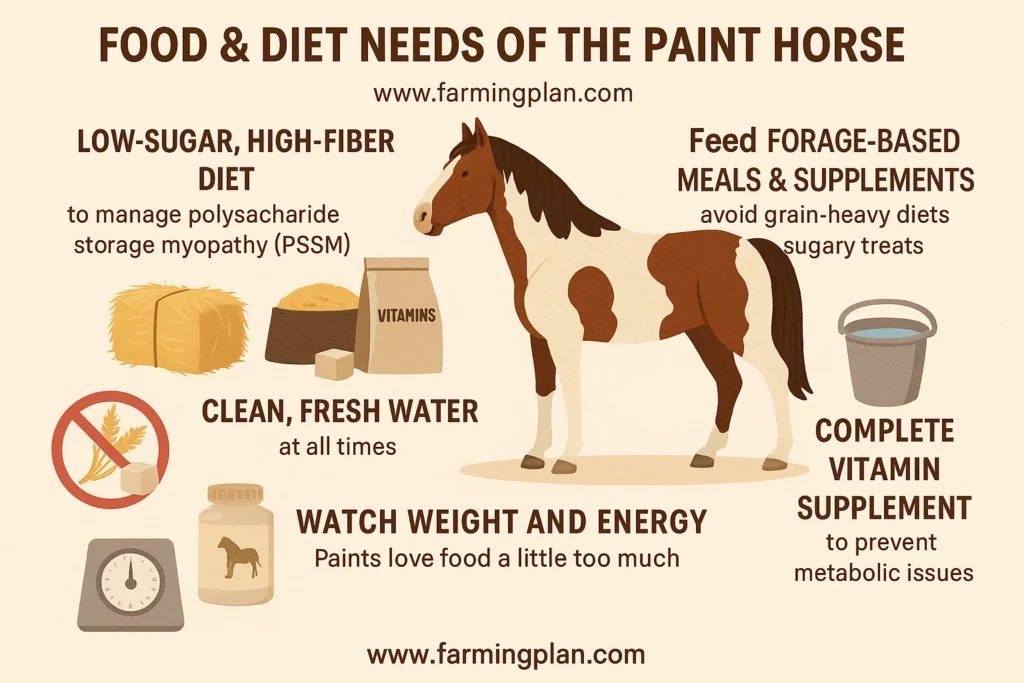
Avoid grain-heavy diets and sugary treats. Instead, aim for forage-based meals and supplements for stocky, muscular horses. And don’t forget access to clean, fresh water at all times. A comprehensive vitamin supplement helps prevent metabolic issues, especially in active or older horses. Always watch their weight and energy levels—Paints love food a little too much, which can lead to problems if you’re not careful.
How People Use Paint Horses
Here’s where the Paint shines—they’re versatile horses through and through. Whether you’re riding Western pleasure, doing reining, or just hitting the trails, they’ve got the skills and the stamina. I’ve used them on the farm for light work, but I’ve also seen them dominate in the show ring with grace and style. Because of their Quarter Horse ancestry, they’re fast, agile, and built for paint horse racing and performance events. Many ranchers favor them for trail rides, cutting, and barrel racing. And thanks to their calm demeanor, they also do well in therapy riding programs. Honestly, there’s very little these horses can’t do, so I always recommend them to folks looking for a reliable all-around horse.
Special Features That Set Paint Horses Apart
Those flashy coat patterns draw most people to paint in the first place. They’ve got some of the most desirable coat patterns in the horse world, from bold black and white combinations to rare brown to champagne blends. Each one looks like it was hand-painted by nature itself.
But their beauty isn’t just skin deep. Paint Horses are also known for intense pigmentation, helping them avoid skin issues plaguing lighter-skinned horses. And let’s not forget their genetics—things like the KIT gene and frame overo gene play a massive role in their appearance. You might also notice those signature belly spots and dark-colored skin under white hair, which help distinguish them from other breeds. All in all, these horses are as unique as fingerprints.
Common Health Problems & How to Prevent Them
No breed is perfect, and Paint Horses do have a few health concerns. The big one is Overo Lethal White Syndrome (OLWS), a genetic disorder that affects foals born from two overo-patterned parents. These foals look white but suffer from a fatal intestinal issue. It’s heartbreaking but avoidable with responsible breeding and genetic testing.
Then there’s PSSM, which we touched on earlier. Watch for stiffness or reluctance to move—those can be signs. Periodic paralysis and colic are also issues to watch, especially if your horse is overweight or eating the wrong feeds. Preventive care goes a long way: regular vet checks, proper diet, exercise, and avoiding high-sugar feeds are the key. Trust me—an ounce of prevention saves you many vet bills.
Read more: Thoroughbred Horse: Discover the Secrets Behind Their Unmatched Strength
Step-by-Step Paint Horse Care Guide
Owning a Paint Horse is as rewarding as it is colorful, but caring for one takes more than just admiration for their stunning coat. From nutrition and shelter to training and grooming, a lot goes into keeping these horses healthy, happy, and thriving. Here’s my detailed care guide to help you raise a Paint Horse like a pro—whether you’re a hobbyist, farmer, or first-time owner.
Step 1: Choose a Healthy, Registered Paint Horse
First, you want a Paint Horse that’s healthy inside and out. Always start with a registered horse from the American Paint Horse Association (APHA) to ensure it meets the breed standards and has a proper lineage. Ask to see papers and health records, especially genetic testing results for known issues like Overo Lethal White Syndrome (OLWS), which can be fatal to foals born from two overo-patterned parents.
When visiting a breeder or farm, observe the horse’s behavior. You’re looking for bright, alert eyes, clean nostrils, a healthy coat, and smooth movement. Pay attention to appetite and how the horse interacts with people. Trust me—first impressions matter when you’re choosing a lifelong companion. If you plan to breed or show, also learn about coat color genetics. Specific genes affect the horse’s appearance and registration status, impacting show eligibility. Oh, and don’t skip the pre-purchase vet exam—this step alone can save you thousands.
Step 2: Set Up the Right Living Space
A happy Paint needs a safe, comfortable place to live. Set up a pasture or paddock with sturdy fencing—avoid barbed wire at all costs. It’s not Paint-friendly and can lead to nasty injuries. Instead, go for wood or electric tape fencing. Horses like to roam, so the more space, the better. Paints are active and social; they’ll thrive with room to move.
Shelter is just as important. At the very least, provide a run-in shed to protect them from rain, wind, and hot sun. Use clean, absorbent bedding like straw or shavings for stabled horses and muck the stalls daily. Hoof health can take a hit if their living space is too wet or muddy, so good drainage is crucial. I also recommend rotating pastures to prevent overgrazing and allow the grass to recover. These horses are resilient, but let’s be real—they love a cozy home just like we do.
Step 3: Feed Smart with a Balanced Diet
Paint Horses thrive on a forage-based diet, just like most stock breeds. Start with high-quality grass hay or legume hay, depending on the horse’s age and activity level. Grain should be given sparingly and only if they need it for extra energy. Too much sugar and starch can trigger PSSM (Polysaccharide Storage Myopathy), a muscle disorder that Patients are genetically prone to. Instead, choose low-sugar, high-fiber feeds and balance them with a good vitamin and mineral supplement.
Feeding time is also bonding time. I feed my Paints twice daily and continuously monitor their body condition. If they start getting a bit too chunky (and believe me, they love to eat), I adjust their diet and up their exercise. Clean, fresh water should always be available, and during hot weather, I add a salt block or electrolyte supplement to keep them hydrated. If you’re unsure what to feed or how much, don’t wing it—talk to an equine nutritionist or vet. They’ll steer you in the right direction.
Step 4: Groom and Maintain Their Stunning Coat
Paint Horses are known for their beautiful, often intricate coat patterns, and keeping them clean and healthy is a must. Daily grooming helps not just with cleanliness but also with building trust and catching any skin or health issues early. Start with a rubber curry comb to loosen dirt and hair, then follow with a soft-bristled brush to bring out that glossy shine. Take your time—it’s like a spa day for your horse.
Don’t forget the hooves! Clean them daily with a hoof pick and check for cracks, thrush, or stones. Apply hoof conditioner or hoof oil regularly to keep them strong and supple. For shows or fun, you can use non-toxic white Paint or chalk to brighten their markings, but always test them on a small patch first. Horses with large white patches can have more sensitive skin, especially to sunlight, so consider using UV-blocking fly sheets or sunscreen for extra protection. And, of course, every grooming session should end with a treat—they’ve earned it!
Step 5: Train with Patience and Purpose
Training your Paint Horse should be fun, not frustrating. These horses are intelligent, willing, and eager to learn—but they need a calm, confident handler. I always start with groundwork: haltering, leading, desensitizing, and voice commands. If you skip these basics, riding will be a lot tougher.
Once your Paint is comfortable on the ground, ease into saddle work. They do exceptionally well with Western disciplines like reining and trail riding but can adapt to English styles, too. Keep training sessions short, consistent, and always end on a positive note. Use a mix of praise, gentle correction, and lots of patience. If your horse struggles, don’t push too hard—some days are off. As you build trust, you’ll notice your Paint tuning into your body language, and that’s when the real magic happens. A well-trained Paint Horse is more than a ride—it’s a partner.
Every Paint Horse Is A Walking Work Of Art—Care For It Like You’d Frame A Masterpiece.
Expert Tips and Best Practices for Raising Paint Horses
- Register your horse with APHA early
- Stick to a forage-based diet to avoid metabolic issues
- Use gentle grooming tools for white patches
- Learn about coat color genetics before breeding
- Never breed two overo-patterned horses
- Practice regular hoof care and trims
- Use non-toxic Paint or chalk for show days
- Socialize them—they’re people horses!
Read more: Discover the Incredible World of the Quarter Horse
FAQ
Are Paint Horses a breed or just a color?
They’re a breed! Paint Horses are officially recognized and registered by the American Paint Horse Association (APHA).
Can a Paint Horse be solid-colored?
Yes. As long as it meets the APHA bloodline requirements, even solid-colored horses qualify as Paints.
Are Paint Horses suitable for kids or beginners?
Absolutely. Their friendly, calm nature makes them great for young or new riders.
What’s the lifespan of a Paint Horse?
With proper care, they live 25 to 30 years on average.
Do Paint Horses need special care for their coats?
Not really—just regular grooming and attention to skin under white areas since it can be more sensitive to sunburn.
Conclusion
The Paint Horse stands out for all the right reasons. With its vivid coat patterns, stocky build, and friendly temperament, it’s a dream horse for just about anyone—whether you’re working on the ranch, riding trails, or competing in the ring. Their history is rich; their abilities are wide-ranging, and their hearts? As big as their personalities. If you’re looking for a horse that blends style with substance, look no further than the vibrant, versatile Paint.

